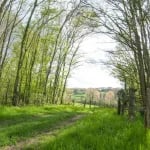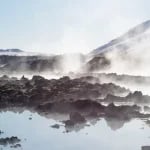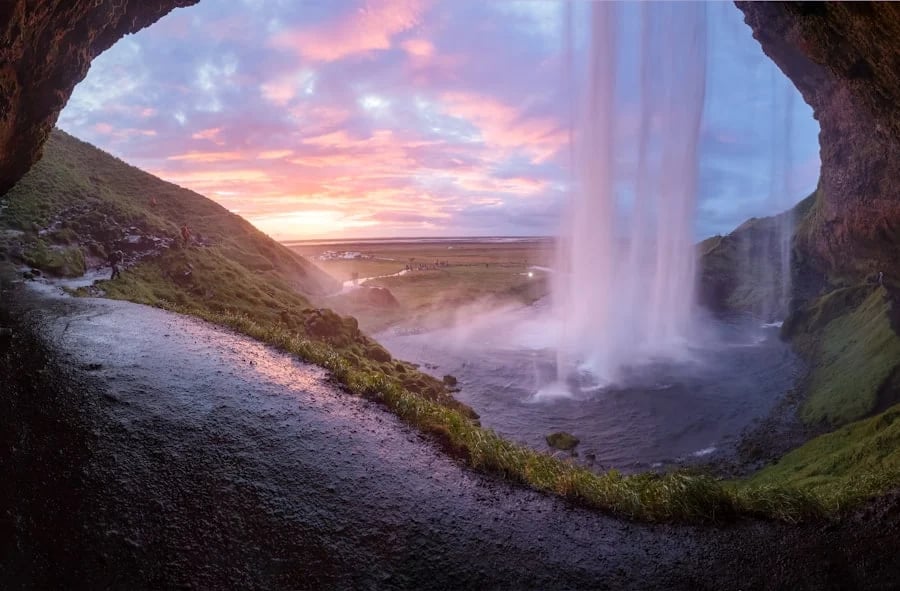
Discovering the Wonders of Iceland: A Journey Through the Land of Fire and Ice

The best time to visit Iceland largely depends on the type of experience you are seeking. The summer months of June to August offer long daylight hours and milder temperatures, making it an ideal time for outdoor activities such as hiking, biking, and exploring the country’s natural wonders. The winter months from November to February are perfect for witnessing the Northern Lights, as well as enjoying winter sports such as skiing and snowboarding.
When it comes to finding travel deals and discounts for Iceland, it’s important to be flexible with your travel dates. Many airlines offer discounted fares during the off-peak seasons, which can help you save money on your trip. Additionally, booking your accommodations and activities in advance can often lead to discounted rates. It’s also worth checking out travel websites and tour operators that specialize in Iceland travel, as they may have exclusive deals and packages available.
Vacation Packages for Exploring Iceland
There are numerous vacation packages available for exploring Iceland, catering to different interests and budgets. Some popular options include self-drive tours, guided group tours, and luxury packages.
Self-drive tours allow you to explore Iceland at your own pace, giving you the freedom to choose your own itinerary and spend as much time as you like at each destination. These packages typically include a rental car, accommodations, and a suggested route with highlights along the way.
Guided group tours are a great option for those who prefer to have a knowledgeable guide leading the way. These tours often include transportation, accommodations, meals, and activities, allowing you to sit back and relax while someone else takes care of the logistics.
For those seeking a more luxurious experience, there are several high-end vacation packages available in Iceland. These packages often include stays at luxury hotels, private tours with expert guides, and exclusive experiences such as helicopter rides over glaciers or private access to geothermal spas.
Adventure Tourism in Iceland: Hiking, Biking, and More
Iceland is a paradise for adventure enthusiasts, offering a wide range of outdoor activities such as hiking, biking, horseback riding, and glacier climbing. The country’s unique landscape provides the perfect backdrop for these activities, with its rugged mountains, vast glaciers, and stunning waterfalls.
One of the most popular hiking trails in Iceland is the Laugavegur Trail, which takes you through some of the country’s most breathtaking landscapes, including colorful rhyolite mountains and black sand deserts. Another popular option is the Fimmvörðuháls Trail, which takes you between two glaciers and offers stunning views of waterfalls and volcanic craters.
For biking enthusiasts, there are several trails and routes to choose from, ranging from easy coastal rides to challenging mountain biking routes. The Golden Circle is a popular biking route that takes you past some of Iceland’s most famous attractions, including the Geysir geothermal area and Gullfoss waterfall.
Luxury Travel in Iceland: Top Hotels and Experiences
| Activity | Number of Tourists (2019) | Percentage of Total Tourists | Revenue Generated (in millions USD) |
|---|---|---|---|
| Hiking | 350,000 | 30% | 45 |
| Biking | 120,000 | 10% | 15 |
| Glacier Hiking | 80,000 | 7% | 10 |
| Whale Watching | 200,000 | 17% | 25 |
| Horseback Riding | 150,000 | 13% | 20 |
| Caving | 50,000 | 4% | 5 |
| Fishing | 100,000 | 9% | 12 |
| Other | 100,000 | 10% | 13 |
Iceland offers a range of luxury travel options for those seeking a more indulgent experience. The country is home to several world-class hotels that offer top-notch amenities and services. One of the most renowned luxury hotels in Iceland is the Ion Adventure Hotel, located in the heart of the Golden Circle. This eco-friendly hotel offers stunning views of the surrounding landscape and features a spa, a gourmet restaurant, and a bar with floor-to-ceiling windows.
In addition to luxury accommodations, Iceland also offers unique and luxurious experiences. One such experience is a visit to the Blue Lagoon, a geothermal spa known for its mineral-rich waters and rejuvenating treatments. Another popular luxury experience is a helicopter tour over Iceland’s glaciers and volcanoes, offering a bird’s-eye view of the country’s stunning landscapes.
Budget Travel Tips for Exploring Iceland
While Iceland can be an expensive destination, there are ways to explore the country on a budget. One of the best ways to save money is by opting for budget accommodations such as guesthouses or hostels instead of luxury hotels. These options often offer clean and comfortable accommodations at a fraction of the cost.
Another way to save money is by cooking your own meals instead of eating out at restaurants. Most accommodations in Iceland have shared kitchens where you can prepare your own meals, which can help you save significantly on food expenses.
Additionally, consider visiting Iceland during the shoulder seasons of spring and fall, when prices are generally lower and crowds are smaller. During these times, you can still enjoy mild weather and beautiful landscapes without breaking the bank.
Exploring Iceland’s Geothermal Wonders: Hot Springs, Geysers, and More
Iceland is known for its geothermal wonders, including hot springs, geysers, and volcanic landscapes. One of the most famous geothermal attractions in Iceland is the Blue Lagoon, a large geothermal spa located in a lava field. The milky blue waters of the lagoon are rich in minerals and are believed to have healing properties.
Another popular geothermal attraction is the Geysir geothermal area, home to the Great Geysir and Strokkur geysers. The Great Geysir is one of the oldest known geysers in the world, while Strokkur erupts every few minutes, shooting hot water up to 30 meters in the air.
For a more off-the-beaten-path experience, consider visiting the Hveravellir Nature Reserve, located in the highlands of Iceland. This remote area is home to hot springs, geothermal pools, and colorful geothermal landscapes, offering a unique and otherworldly experience.
Discovering Iceland’s Natural Beauty: Waterfalls, Glaciers, and More
Iceland is renowned for its natural beauty, which includes stunning waterfalls, majestic glaciers, and dramatic coastlines. One of the most famous waterfalls in Iceland is Seljalandsfoss, located along the South Coast. This waterfall is unique in that you can walk behind it and experience it from a different perspective.
Another must-visit waterfall is Skógafoss, also located along the South Coast. This massive waterfall drops 60 meters and is known for its powerful spray and rainbows that often appear on sunny days.
When it comes to glaciers, Iceland is home to several impressive ice caps, including Vatnajökull, Europe’s largest glacier. Visitors can take guided glacier hikes or even explore ice caves within the glaciers for a truly unique experience.
The Northern Lights: A Natural Phenomenon in Iceland
One of the main reasons people visit Iceland is to witness the Northern Lights, also known as the Aurora Borealis. This natural phenomenon occurs when charged particles from the sun collide with atoms in Earth’s atmosphere, creating colorful displays of light in the night sky.
The best time to see the Northern Lights in Iceland is during the winter months from September to April when nights are longer and darker. It’s important to choose a location away from city lights for optimal viewing conditions.
To increase your chances of seeing the Northern Lights, it’s recommended to check the weather forecast and the aurora forecast, which predicts the likelihood of aurora activity. It’s also a good idea to be patient and allow yourself several nights to try and catch a glimpse of this magical phenomenon.
Why Iceland Should Be on Your Travel Bucket List
In conclusion, Iceland is a destination that offers a unique and unforgettable travel experience. From its stunning natural beauty to its geothermal wonders and adventure tourism options, there is something for everyone in this land of fire and ice.
Whether you’re seeking luxury travel experiences or looking to explore Iceland on a budget, there are options available to suit every traveler’s needs. With its diverse range of attractions and activities, Iceland should definitely be on every traveler’s bucket list. So start planning your trip to this incredible country and get ready to be amazed by all that Iceland has to offer.
If you’re planning a trip to Iceland, you might also be interested in exploring the wonders of Sweden. From its stunning landscapes to its rich history and culture, Sweden offers a unique travel experience. Whether you’re visiting Stockholm’s beautiful archipelago or exploring the charming streets of Gothenburg, there’s something for everyone in this Scandinavian gem. Check out this article on Destination Mate for more information: Exploring Wonders of Sweden.
FAQs
What is Iceland?
Iceland is a Nordic island country located in the North Atlantic Ocean. It has a population of approximately 364,000 people and covers an area of 103,000 square kilometers.
What is the capital city of Iceland?
The capital city of Iceland is Reykjavik. It is the largest city in Iceland and is home to approximately two-thirds of the country’s population.
What is the official language of Iceland?
The official language of Iceland is Icelandic. It is a North Germanic language and is spoken by the majority of the population.
What is the currency of Iceland?
The currency of Iceland is the Icelandic króna (ISK). It is abbreviated as “kr” and is divided into 100 aurar.
What is the climate like in Iceland?
The climate in Iceland is subarctic or cold oceanic, depending on the location. The average temperature in Reykjavik ranges from -1°C in January to 11°C in July.
What are some popular tourist attractions in Iceland?
Some popular tourist attractions in Iceland include the Blue Lagoon, the Golden Circle, the Northern Lights, and the Vatnajökull Glacier.
What is the economy of Iceland based on?
The economy of Iceland is based on fishing, tourism, and aluminum production. It also has a small but growing technology sector.
What is the education system like in Iceland?
The education system in Iceland is free and compulsory for children between the ages of 6 and 16. It is also highly valued, with a literacy rate of 99%.
What is the healthcare system like in Iceland?
The healthcare system in Iceland is publicly funded and provides universal coverage to all residents. It is considered to be of high quality and is ranked among the best in the world.
Recent Posts



